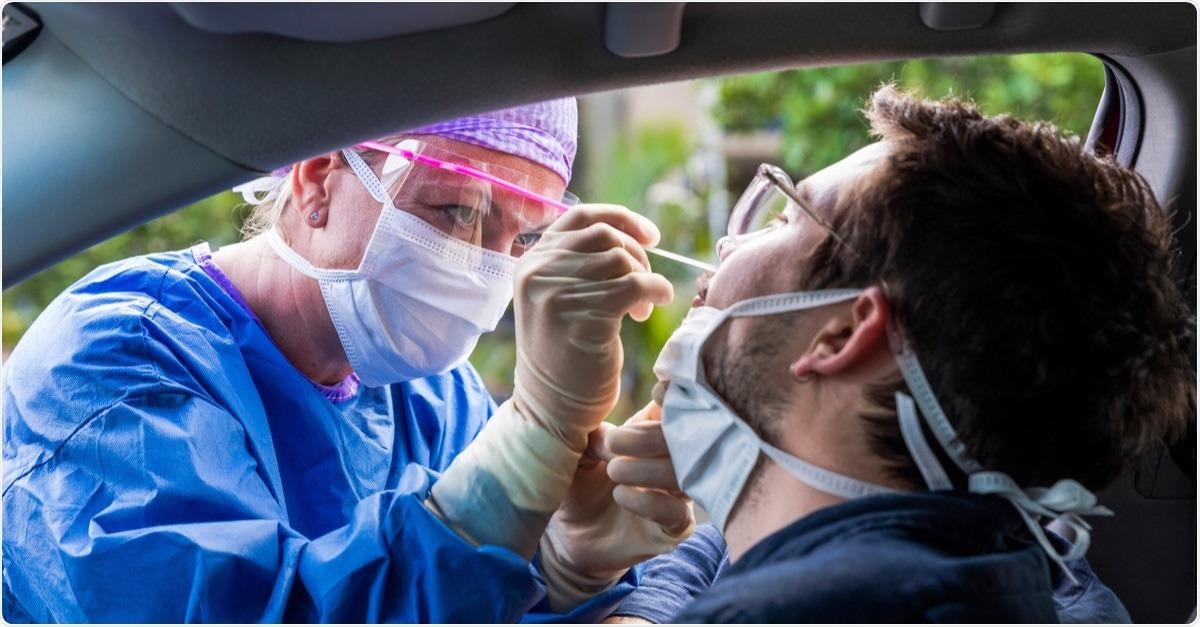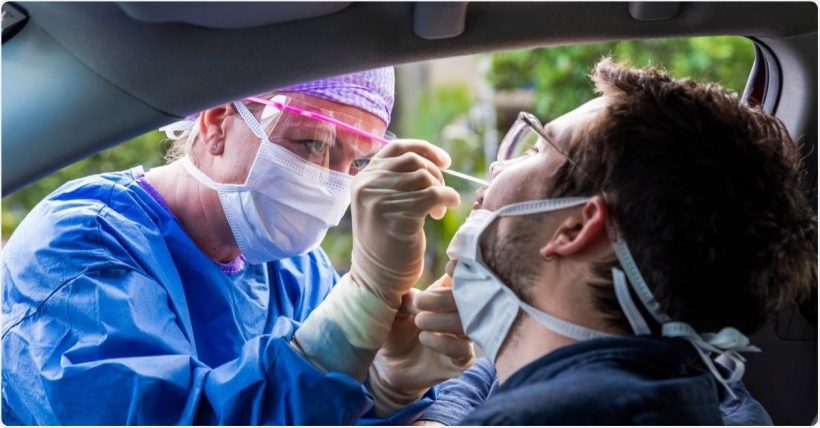In a recent study posted to the Research Square* pre-print server, a team of researchers from Italy and the United States (US) retrospectively reviewed and compared viral load in severe acute respiratory syndrome coronavirus 2 (SARS-CoV-2) Omicron and previous SARS-CoV-2 strain-induced infection.

Short Report: SARS-CoV-2 Omicron infection is associated with high nasopharyngeal viral load. Image Credit: zstock / Shutterstock
The World Health Organization (WHO) in December 2021 declared five SARS-CoV-2 variants of concern (VOC) – Alpha, Beta, Gamma, Delta, and Omicron. The SARS-CoV-2 Omicron variant was first detected on 24 November 2021 in South Africa. Due to its higher transmissibility, this variant spread at a rapid rate and became the most dominant variant worldwide in January 2022.
Previous studies suggested that a higher transmission of the SARS-CoV-2 Omicron variant is due to the higher emission breath rate of viral particles in patients infected with this variant. However, this inference is intriguingly speculative as there is no direct comparison of viral load between different SARS-CoV-2 variants.
This study is conducted to provide a direct differentiation of viral load in the nasopharyngeal specimen of patients infected with SARS-CoV-2 Omicron and former SARS-CoV-2 variants in Italy.
Study design
The present study subjects were tested COVID-19-positive patients who have undergone SARS-CoV-2 testing in Pederzoli Hospital of Peschiera del Garda, Italy, during 3-9 January 2021, and 3-9 January 2022, characterizing the high prevalence of Alpha (> 95%) and Omicron variants (>90%), respectively.
The SARS-CoV-2 viral load was estimated using the same procedure and instrumentation (SARS-CoV-2 Seegene Allplex Assay) during the said duration of both years. Using this real-time polymerase chain reaction (RT-PCR) assay, cumulative viral load from the nasopharyngeal swab was measured and expressed as the cycle threshold (Ct) value of different SARS-CoV-2 genes.
Findings
The researchers observed a total of 47 and 118 SARS-CoV-2-positive patients in January 2021 and January 2022, respectively. In 2021, the majority of SARS-CoV-2 positive subjects were older (63 years, median age) as compared to the subjects in 2022 (42 years median age). At the same time, sex distribution in both periods was similar, with 68% female in 2021 and 58% in 2022.
At the time of the high prevalence of the Omicron variant in January 2022, Ct values were significantly lower (median Ct value- 27.5) as compared to the Ct value in January 2021 (median Ct value- 31.8) when the Alpha variant was predominant.
Importantly, the team noted that in January 2022, there was a two-fold higher rate of subjects (45 out of 118) with increased nasopharyngeal viral load (< 25 Ct values) as compared to the subjects from January 2021 (10 out of 47; odds ratio 2.28).
Conclusion
The findings of this research demonstrated that patients infected with the SARS-CoV-2 Omicron variant released aerosols that contain higher viral load as compared to the patients infected with former SARS-CoV-2 strains.
This study provides a valid biological reason to support previous reports on the high transmission rate of the SARS-CoV-2 Omicron variant and the increased prevalence of symptoms related to upper respiratory tract infections due to this variant.
*Important Notice
Research Square publishes preliminary scientific reports that are not peer-reviewed and, therefore, should not be regarded as conclusive, guide clinical practice/health-related behavior, or treated as established information.
- Gian Luca Salvagno, Brandon M. Henry, Laura Pighi et al. SARS-CoV-2 Omicron infection is associated with high nasopharyngeal viral load. 21 February 2022. Research Square, doi: 10.21203/rs.3.rs-1380500/v1, https://www.researchsquare.com/article/rs-1380500/v1
Posted in: Medical Research News | Disease/Infection News
Tags: Assay, Coronavirus, Coronavirus Disease COVID-19, covid-19, CT, Genes, Hospital, Nasopharyngeal, Omicron, Polymerase, Polymerase Chain Reaction, Research, Respiratory, Respiratory Tract Infections, SARS, SARS-CoV-2, Severe Acute Respiratory, Severe Acute Respiratory Syndrome, Syndrome

Written by
Sangeeta Paul
Sangeeta Paul is a researcher and medical writer based in Gurugram, India. Her academic background is in Pharmacy; she has a Bachelor’s in Pharmacy, a Master’s in Pharmacy (Pharmacology), and Ph.D. in Pharmacology from Banasthali Vidyapith, Rajasthan, India. She also holds a post-graduate diploma in Drug regulatory affairs from Jamia Hamdard, New Delhi, and a post-graduate diploma in Intellectual Property Rights, IGNOU, India.
Source: Read Full Article
